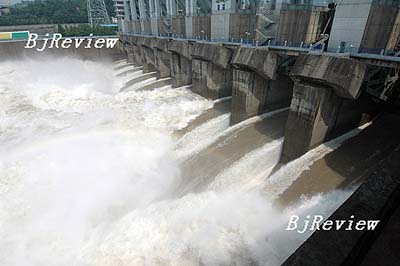|

Those making a list might want to check it twice, or maybe five times. Restructuring and mergers of state-owned enterprises (SOEs) in China can be a complicated affair.
On September 28, Gezhouba Co. Ltd. successfully merged with China Gezhouba Water & Power (Group) Co. Ltd. (CGWP) through an exchange of shares. After being approved by the local administration of industry and commerce, Gezhouba Co. Ltd. was renamed China Gezhouba Group Co. Ltd. On the same day, China Gezhouba Water & Power (Group) Co. Ltd. was officially terminated and ceased operating.
Gezhouba Co. Ltd., a wholly SOE under the State-Owned Assets Supervision and Administration Commission of the State Council (SASAC), is also a listed branch company of China Gezhouba Group. CGWP was co-established by China Gezhouba Group, along with China Huarong Asset Management Corp. (Huarong), China Cinda Asset Management Corp. (Cinda), and China Great Wall Asset Management Corp. (Changcheng) in November 2001. In 2006, China Gezhouba Group completed its acquisition of shares held by Huarong and Changcheng and has since held 82.32 percent of CGWP's shares.
China Gezhouba Group is best known for its construction of the largest hydropower hub-the Gezhouba Hydropower Station on the Yangtze River.
The merger of Gezhouba Co. Ltd. and CGWP made it possible for the overall listing of China Gezhouba Group's major assets-the actual controller of the two companies. Through the procedures, China Gezhouba Group Co. Ltd. became another overall-listed state-owned company.
Currently, China Gezhouba Group holds 43.41 percent of the newly established listed company. The Sanxia branch of China Construction Bank and Cinda hold 8.01 percent and 1.27 percent of the new company respectively.
Besides these companies, SOEs also on the listing treadmill include China Guodian Corp., State Development & Investment Corp., China North Industries Group Corp., China State Construction Engineering Corp., Dongfang Electric Corp. and China Changjiang National Shipping (Group) Corp. These SOEs already control at least one listed company, respectively.
Last December, the SASAC issued a document entitled Opinions on Guidelines for Promoting Restructuring of State-Owned Assets and State-Owned Enterprises (the Opinions), stating that large SOEs must be reshuffled into shareholding companies with multiple numbers of shareholders. The exceptions to these rules include those companies involved in national security, those subject to state monopoly and those managing state-owned assets. This guideline indicates that the majority of large SOEs can be listed on the stock market. Because many state-owned listed groups control SOEs that do not qualify for listing, their second option has been to merge their assets into already listed companies in order to float all the boats. The restructuring of SOEs is a major reform following on the heels of shareholding reform of SOEs.
The large-scale reform of SOEs in 1998 reduced the number of SOEs from the total of 534,400 the year before to 165,100. The reform helped enhance the competitiveness of SOEs. After the founding of the SASAC in 2003, the number of central SOEs was reduced to 155 from 197.
According to the goal set by the SASAC, the number of SOEs directly affiliated with the Central Government, or central SOEs, will be pared down to between 80 and 100 by 2010.
"Starting from the end of this year, the restructuring of central SOEs will be carried out on a large scale," said Wang Zhigang, a senior SASAC official. "The goal is expected to be met by the end of 2008."
Ambitions abound
It is obvious that the core of the restructuring of central SOEs is to
| 